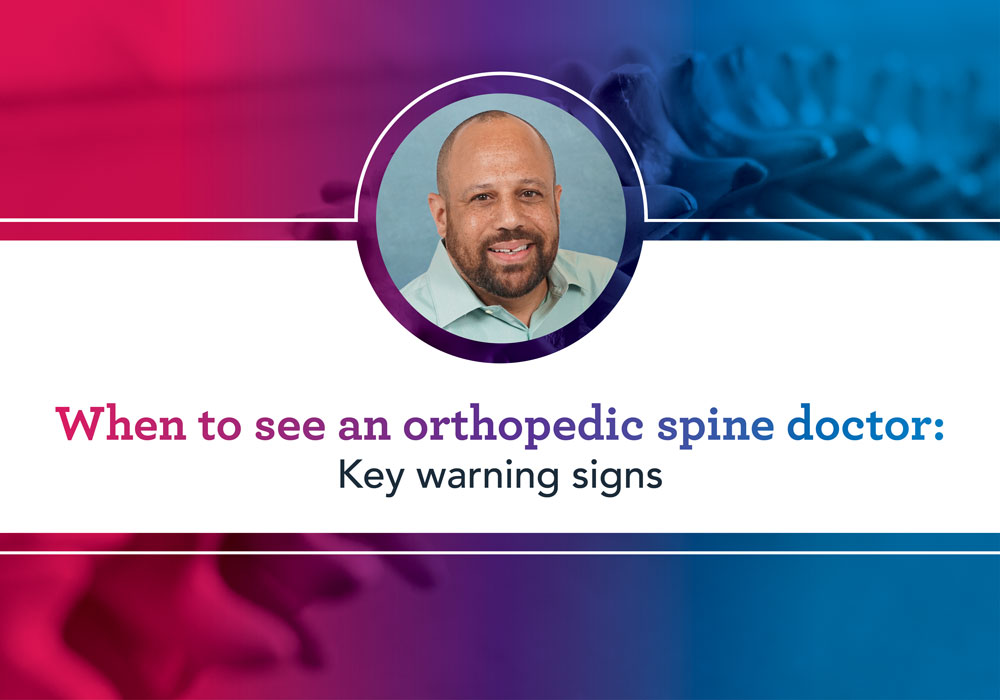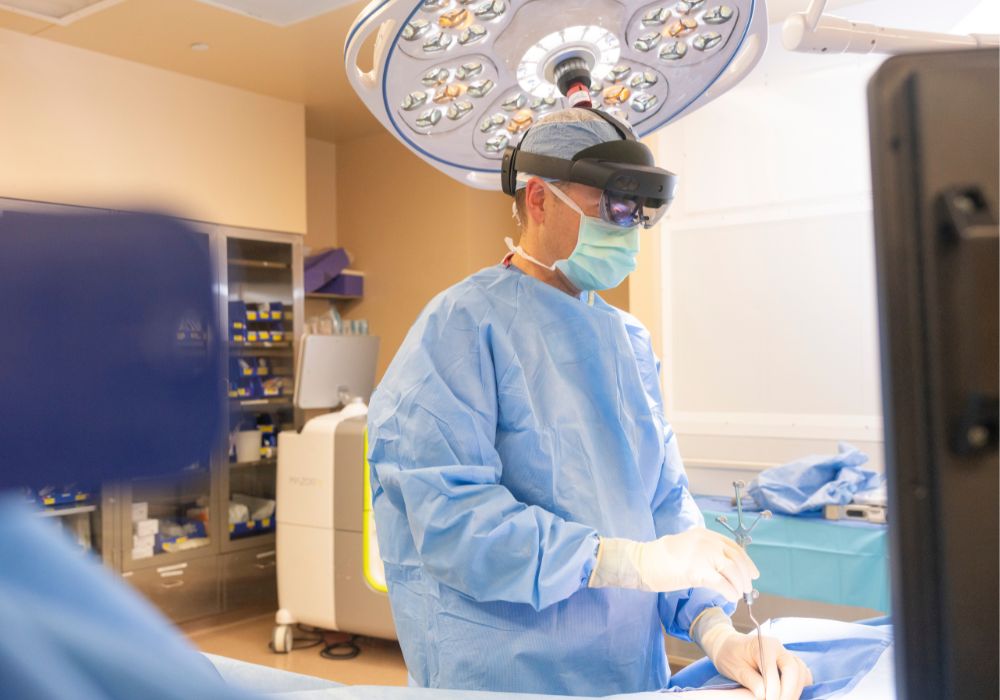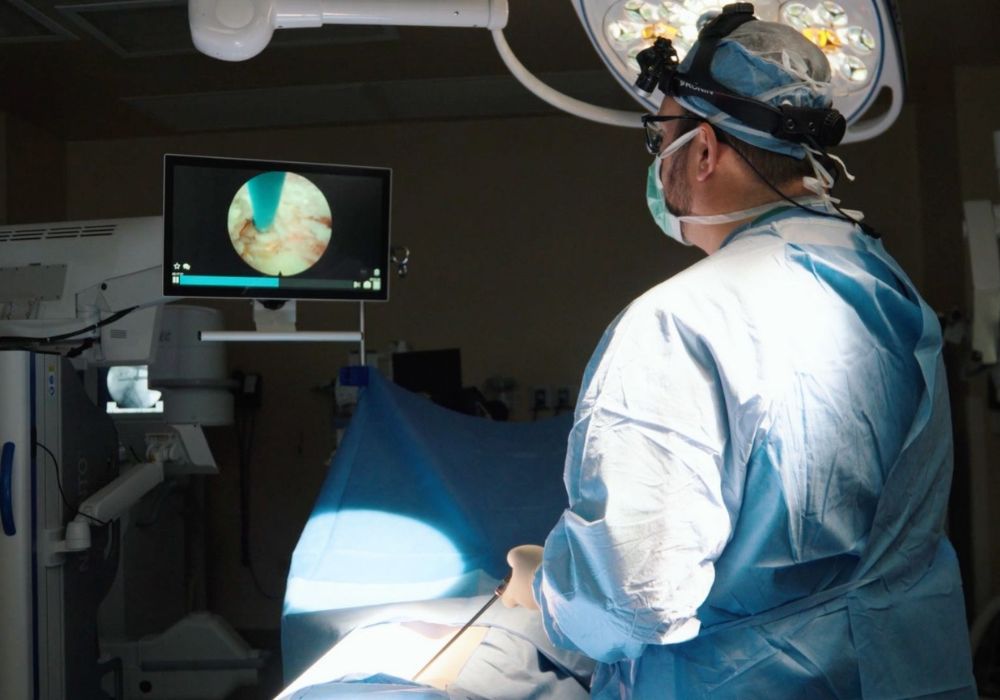Many people mistake their back pain from sciatica for pain caused by a hip condition. According to Spine Health, sciatica occurs in 10–40% of the population, and it is a condition that affects your lumbar or lower spine.
Read on to hear from Dr. Kevin O’Neill, an OrthoIndy spine surgeon, as he discusses causes, similar symptoms, common conditions and how to tell if you’re experiencing back pain from sciatica or a hip condition.
Can sciatica cause hip pain?
Even though sciatica is a back condition, it can often be mistaken for a hip condition. Feeling sciatic nerve pain in your hip is common, as well as radiating down your leg.
Determining the source of your pain will help you treat it the right way and get the best results for recovery. It’s important to seek care if you have hip or back pain from sciatica.
Sciatic nerve pain often starts in your hip, radiates down to your knee, and can even be felt in your feet.
If you’re experiencing pain, numbness, tingling or an electric shock sensation associated with your pain, it usually means it’s a back condition.
“Most commonly, sciatic nerve pain runs down the back of the thigh and into the calf and foot, but it can also run down the front of the thigh,” Dr. O’Neill says.
“When this is the case, it can be confused with pain coming from the hip joint. Classically, pain from a hip joint problem is felt in the buttock and wrapping around to the groin but can feel like it runs down the thigh.”
According to Dr. O’Neill, although it’s called sciatica, back pain from sciatica usually originates from irritation or compression of one of the nerves in your lower back (radiculopathy).
Actual sciatic nerve irritation is rare.
Signs of sciatica
Some other sciatica pain symptoms include:
- Pain that feels like a bad leg cramp
- Sharp pain
- Pain that heightens when you move, sneeze or cough
- Weakness, numbness or a tingling sensation down your leg
“When sitting down, the pain is often made worse by straightening out the knee—and sometimes even straightening out the leg that is not hurting can cause the pain to worsen,” Dr. O’Neill says. “Similarly, the pain can be made worse when lying down and raising a straight leg in the air.”
When should you see a doctor if you suspect hip or back pain from sciatica?
If you have sciatic nerve pain, Dr. O’Neill suggests seeing a doctor. Any hip or back pain from sciatica is not normal and should be diagnosed as soon as possible.
To determine if you have back pain from sciatica, your physician will ask you for a complete medical history, ask you to describe your symptoms, and conduct a physical examination.
An X-ray or MRI may be necessary to confirm the diagnosis and determine if there are other problems.
To determine if you’re having hip pain or back pain from sciatica, you may need special X-rays and imaging of your hip and back. Hip and back pain is often related, so your pain might be coming from both in some cases.
Make an appointment with an Orthoindy spine specialist
What are some treatment options to relieve back pain from sciatica?
Any activity involving lifting or carrying heavy objects can cause degenerative changes as you get older and use your muscles more.
Start treatment with rest if you begin to feel irritation or back pain from sciatica. If pain down your hip or thigh persists, consider seeing a specialist for nonsurgical treatment options, including:
- Non-steroidal anti-inflammatory drugs (e.g., ibuprofen, aspirin or muscle relaxants)
- Heat or cold on your aching muscles
- Physical therapy, exercises and stretches for sciatica
- Cortisone injections
Pay attention to the pattern of your pain. If you can accurately identify where your pain is coming from and what it feels like, it is much easier for your physician to come up with a diagnosis.
Lastly, it’s essential to inform your physician of the movements and activities that make your back pain from sciatica worse. This may also help them determine where your pain originates.
To schedule an appointment, please call 317.802.2429 or learn more about OrthoIndy’s spine team and Dr. O’Neill.
Surgical treatment
Back surgery for sciatica may be necessary if you don’t feel relief after an extended period, and nonsurgical treatments don’t relieve your symptoms.
During surgery for sciatica, which is called a laminotomy with discectomy, a spine surgeon may remove the herniated disc to stop it from pressing on your nerve.
The surgery is performed under local, spinal or general anesthesia, and it is usually very successful at relieving back pain from sciatica.
Schedule an appointment
Your well-being is important to us, and if you’re suffering from back pain from sciatica, our team can help. Schedule online or call us to set up an appointment with one of our orthopedic specialists.
Learn more about the conditions that could be causing you pain, like degenerative disc disease and sciatica, and find out if treatments like spine surgery for sciatica are right for you.
If your injury or condition is recent, you can walk right into one of our OrthoIndy Urgent Care locations for immediate care. No referral is needed for rehabilitation and physical therapy to see one of our physical therapists.





